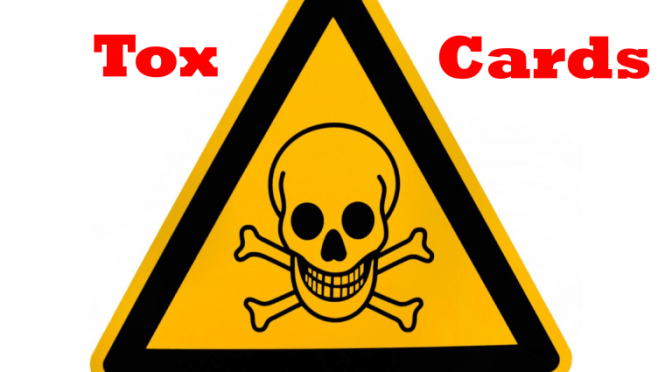Author: Alexandra King, PharmD (Clinical Toxicology Fellow, Emory University School of Medicine) // Edited by: Cynthia Santos, MD (Senior Medical Toxicology Fellow, Emory University School of Medicine), Alex Koyfman, MD (@EMHighAK, EM Attending Physician, UT Southwestern Medical Center / Parkland Memorial Hospital) and Brit Long, MD (@long_brit)
Case Presentation:
51 year-old female presents to the emergency department with altered mental status and lethargy, only responding to painful stimuli. EMS reports empty medications bottles were found near the patient including aspirin. Vitals signs: HR 100, BP 130/70, RR 30, SpO2 97% room air, oral temperature 38.3°C. VBG: pH 7.23/ pCO2 29/ pO2 60/HCO3– 19. Salicylate level 39 mg/dL.
Question:
How to you treat this patient and manage their salicylate poisoning if sodium bicarbonate is completely out of stock in your hospital due to a recent drug shortage?
Pearl:
A shortage of sodium bicarbonate has been reported by the FDA on March 1, 2017 due to an increase in demand and manufacturing delays. Sodium acetate can be a safe and viable replacement to sodium bicarbonate due to its ability to provide alkaline pH buffering and create a sodium ion concentration gradient.
- Sodium bicarbonate shortages are recognized by several different manufactures including Amphaster, Hospira, and Pfizer. Products affected may include 8.4% vials and syringes, 7.5% syringes, and 4.2% syringes. The shortage is estimated to be not be recovered until late into the end of June 2017.1,2
- Sodium bicarbonate is crucial for the management of several different poisonings through alkalinization of serum or urine and by providing sodium ion loading. Sodium bicarbonate has not always had a clearly defined and accepted alternative to use when situations such as a drug shortage arise. Medical literature on this topic is very limited.
- Neavyn and colleagues explored sodium acetate as an alternative to sodium bicarbonate back in 2013 when a similar situation arose.3 Their research concluded that sodium acetate is a viable and safe replacement to sodium bicarbonate due to its similar ability to provide alkaline pH buffering and create a sodium ion concentration gradient.
- Similarly to sodium bicarbonate, sodium acetate increases the strong ion difference by increasing the net concentration of cations, which in turn produces alkalemia. Once injected, acetate forms acetyl CoA and enters the citric acid cycle with further production carbon dioxide (CO2) and water (H2O) byproducts. Carbonic anhydrase catalyzes the reaction of CO2 and H2O to create a rapid equilibrium with bicarbonate (HCO3–).
- The theory of acetate metabolism occurring primarily in the liver has been disproven by several studies.4,5 Metabolism of acetate was also identified to occur in the skeletal muscle; therefore, hepatic dysfunction should not solely affect the body’s ability to handle infused sodium acetate.
- However, a maximum metabolic threshold of sodium acetate has been identified.3 If sodium acetate exceeds this threshold the level of acetate increases without an equimolar rise in bicarbonate.
- The doses of sodium acetate that will be used as a sodium bicarbonate alternative are unlikely to exceed this threshold, with the exception of rapid IV bolus over 1-2 minutes; consequently rapid bolus infusions of sodium acetate should be avoided.
- Sodium acetate is available in both 2mEq/mL and 4mEq/mL concentrations, compared to 1mEq/1mL sodium bicarbonate concentrations.
To treat prolonged QRS and severe cardiac dysrhythmias with Sodium Acetate:
- 1 mEq Sodium Acetate/kg body weight infused over 15-20 minutes
To alkalinize serum or urine with Sodium Acetate:
- Prepare an infusion of 150 mEq sodium acetate diluted in 1000mL D5W running at twice maintenance rate.
- The indications and goals of therapy, including maintaining a serum pH between 7.5 – 7.55 and a urine pH of 7-8 while ensuring not to exceed a serum pH of 7.55, remain unchanged.
- Patients should be monitored for adverse effects of sodium acetate, which include hypotension, hypopnea, flushing, and hyperpyrexia. Adverse reactions may complicate or worsen the effects of the underlying poisoning. These symptoms are more likely to occur when sodium acetate is used in much larger doses, particularly as a dialysate.
- No prospective studies evaluate the efficacy of sodium acetate for serum or urinary alkalinization as a treatment of salicylate or tricyclic antidepressant poisonings. Although supporting literature is limited, a case abstract by Boyd and Geller describe the successful use of sodium acetate antidotal therapy for salicylate poisoning without complications.6
- Hypertonic saline may also be a viable alternative to sodium bicarbonate therapy, especially to provide a sodium ion concentration via rapid IV infusion in attempt to narrow wide QRS complexes, commonly seen in patients poisoned by tricyclic antidepressants. Hypertonic saline is supplied as 3% NaCl in 100m or 500mL bags.
To treat prolonged QRS and severe cardiac dysrhythmias with 3% NaCl:
- A dose of 2-4 mL/kg of 3% NaCl provides an equivalent sodium ion concentration to that of a dose of 1-2mEq/kg sodium bicarbonate. This 2-4mL/kg dose of 3% NaCl will provide approximately 1-2mEq of sodium per kilogram of body weight.
Equivalence math shown below:
Sodium bicarbonate:
- Usual bolus dose of 8.4% sodium bicarbonate is 1-2 mEq/kg
- Therefore 80kg pt requires 80 – 160 mEq sodium
- 8.4% Sodium 50mL vial (or “amp”) provides 50 mEq sodium, 2-3 vials of 8.4% sodium bicarbonate provides 100-150mEq of sodium
Hypertonic Saline:
- 3% NaCl : 513 mEq sodium per 1000mL = 0.513mEq/mL
- 2mL of 3% NaCl = ~1 mEq Na
- 4mL of 3% NaCl = ~2 mEq Na
- 100mL of 3% NaCl = 51.3mEq of Na = Roughly equivalent to 1 vial (or “amp”) of 8.4% sodium bicarbonate (50 mEq/50mL, 1mEq/mL)
- For rapid stabilization of a sodium-channel blocker use 3% NaCl 2-4 mL/kg per dose, giving approximately 1-2mEq of Na/kg
- 80kg pt requires 160 mL – 320 mL of 3% hypertonic saline
- Since 1mL of 3% NaCl = 0.513mEq sodium, 160mL = 82 mEq sodium, and 320mL = 164mEq sodium, which is approximately the same amount of sodium mEq calculated that would have been given with sodium bicarbonate.
- Due to hypertonicity hypertonic saline may cause vein damage thus is recommended to be administered via a central line, if possible.7
Main point:
Sodium acetate is a viable alternative to provide serum and urinary alkalinization when there is a shortage of sodium bicarbonate, but should not be routinely used when sodium bicarbonate is available. Sodium acetate dosing is very similar to the dosing used for sodium bicarbonate, however, sodium acetate should be given over 15-20 min (not as a rapid IV bolus). Hypertonic saline may be a viable option for rapid sodium infusion for stabilization of cardiac instability and narrowing of the QRS complex.
References:
- U.S. Food and Drug Administration. Drug safety and availability. Current and Resolved Drug Shortages and Discontinuations Reported to FDA. 2017. https://www.accessdata.fda.gov/scripts/drugshortages/default.cfm. Accessed March 25, 2013.
- American Society of Health-System Pharmacists. Current Drug Shortages. Sodium Bicarbonate Injection. March 2017. https://www.ashp.org/drug-shortages/current-shortages/Drug-Shortage-Detail.aspx?id=788. Accessed March 25, 2017.
- Neavyn MJ, Boyer EW, Bird SB, Babu KM. Sodium Acetate as a Replacement for Sodium Bicarbonate in Medical Toxicology: a Review. JMT. 2013. 9:250-254.
- Skutches CL, Holroyde CP, Myers RN, Paul P, Reichard GA. Plasma acetate turnover and oxidation. J Clin Invest. 1979. 64:708–713
- Schumann WC, Magnusson I, Chandramouli V, Kumaran K, Wahren J, Landau BR. Metabolism of [2-14C]acetate and its use in assessing hepatic Krebs cycle activity and gluconeogenesis. J Biol Chem. 1991. 266:6985–6990
- Boyd M, Geller R (2013) “Acute aspirin overdose managed with sodium acetate due to sodium bicarbonate shortage.” Abstracts of the 2013 ACMT Annual Scientific Meeting, March 15–17, 2013, San Juan, Puerto Rico, US. JMT. 2013. #16
- 3% Sodium Chloride Injection, USP. Prescribing Information. [Package Insert]










1 thought on “TOXCARD: Alternatives to Sodium Bicarbonate for Alkalinization of a Poisoned Patient”
Pingback: LITFL Review 276 • LITFL • Life in the Fast Lane Medical Blog